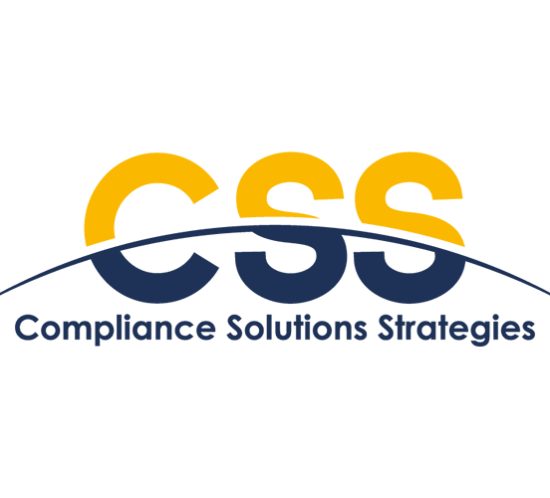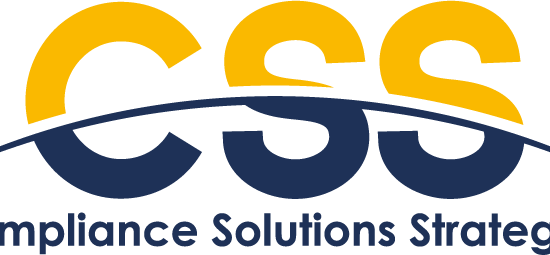Around the World in 10 Days: ESG Regulatory Developments
For global investors, the accelerating pace of ESG regulatory developments portends a massive, additional layer of compliance obligations they will need to fulfill. To illustrate (and take inspiration from Jules Verne’s novel), we need only take a tour of developments around the world in just the last 10 days:
- 18 October – UNITED KINGDOM –HM Treasury publishes “Roadmap to Sustainable Investing”, setting forth sustainability disclosure requirements, and reiterates “ambition to make the UK the best place in the world for green and sustainable investing.”
- 18 October – CANADA –Canadian Securities Administrators (CSA) proposes climate-focused disclosure requirements for issuers, open to public comment until 17 January 2022.
- 20 October – UNITED STATES –SEC Commissioner Allison Herren Lee stresses importance of standardized sustainability risk disclosures for US markets, noting that “regulators can now pick up the baton to help achieve what a voluntary system alone cannot – that is, consistent, comparable, and reliable disclosure.”
- 21 October – NEW ZEALAND – Passage of final legislative stage for new climate-related disclosures bill is acknowledged by FMA, which will monitor and enforce new regime.
- 22 October – EUROPEAN UNION – European Supervisory Authorities (ESAs) publish final draft Regulatory Technical Standards under Taxonomy Regulation, articulating additional environmental assessments required in disclosures.
- 22 October – CHINA – Central Committee of the Communist Party and State Council set forth carbon-neutrality goals, including improvement of carbon emissions disclosures by companies and financial institutions.
A Whirlwind of ESG Regulatory Developments
The whirlwind of developments can easily throw compliance departments off course, some might say like Phileas Fogg’s hot air balloon. Moreover, the pressure is bound to increase. As KPMG’s Kaye Swinburne, a former EU Parliamentarian who herself worked on the EU’s current ESG regime, noted in our recent podcast, the U.N. Climate Change Conference (COP26) which opens next week in Glasgow is likely to place even more impetus on regulators to finalize their efforts.
To stay on track, asset managers should make it a compliance priority to determine where they may be subject to ESG reporting obligations, and what types of firms those regimes cover. (For example under the EU’s Sustainable Finance Disclosure Regulation, website disclosures about the “principal adverse sustainability impacts” of investment decisions are much less onerous for firms with less than 500 employees.) Once the scope of requirements is narrowed down, in most jurisdictions managers will benefit from certain aspects of these regimes. Firstly, generally speaking (outside the EU) new ESG disclosures won’t need to be submitted until 2023 or 2024 at the earliest, giving managers some time to prepare. Another common thread is that the requirements usually address only the “E” (environment) of ESG, and in fact are often focused only on climate-related issues, hence limiting somewhat the variety of data that will be needed by managers for reporting. Finally, many of these regulators are adopting the recommendations of the TCFD (Task Force on Climate-related Financial Disclosures) for their standards, which should streamline compliance efforts.
In those respects, the sometimes held view of ESG compliance as an insurmountable hurdle is probably like that familiar balloon: full of hot air. (Although often appearing on book covers of Around the World in 80 Days, a hot air balloon is in fact nowhere to be found in Verne’s novel.) It’s likely that once reporting standards are further harmonized, investee companies enter their initial reporting phases, and investor compliance departments become accustomed to their disclosure obligations, ESG will be viewed as a critical yet manageable aspect of regulatory compliance.
ESAs to Review PRIIPs
The European Supervisory Authorities (ESAs) are calling for industry input to a review of PRIIPs. The input provided will feed into the ESAs’ technical advice to the European Commission on a review of the key information document (KID) for PRIIPs. The ESAs are requesting information from stakeholders on a range of topics, including the practical application of the existing KID such as its use by financial advisors or the use of digital media, the scope of the PRIIPs regulation and the degree of complexity and readability of the KID. The call for evidence is open until Thursday 16 December 2021. See here for more details.
UK Announces Sustainable Disclosure Regime for Funds
UK divergence from Brexit has now led to a different regime to SFDR in the UK called the Sustainable Disclosure Regime (SDR). it will also include a UK concept aligned to the EU Taxonomy for green finance. Under the SDR regime, investment products will need to set out consumer-focused disclosures showing the impact, risks and opportunities of the activities they finance on sustainability. Read about the full framework here.
Cryptocurrencies in Your Compliance Program
Investing in cryptocurrencies represents a relatively new alternative investment opportunity to diversify an investment portfolio to many investors. To registered investment advisers, it represents opportunities to offer clients solutions to include cryptocurrency as an investment option. Precisely because investing in cryptocurrency represents an alternative to traditional asset classes advisers must consider offering such products from the business, operations and compliance perspective.
From the business and operations perspective, advisers need to understand the unique characteristics of this asset class and how cryptocurrencies are traded. Like any other investments, prior to investing, it is critical for investment advisers to do their homework first, and conduct product due diligence on the cryptocurrency from an operational perspective by examining a host of supervisory and regulatory issues, including, but not limited to valuation, liquidity, trade execution, recordkeeping, custodial functions, and client know your customer onboarding processes and disclosures. Additionally, in the private fund space, having adequate governing fund document disclosures is of paramount importance.
From the compliance perspective, advisers must consider their fiduciary and regulatory obligations. In designing the firm’s policies and procedures, advisers need to identify conflicts and other compliance factors that create risk exposure for the firm and its clients, and then develop or enhance policies and procedures that address those risks. These topics include portfolio management and consistency of portfolios with client objectives, disclosures, safekeeping of client assets, recordkeeping, valuation, marketing, and privacy, among others. In other words, advisers must consider almost every aspect of compliance program requirements when considering cryptocurrency as an additional portfolio asset option.
The SEC’s Division of Examinations issued a Risk Alert in February 2021 entitled “The Division of Examinations’ Continued Focus on Digital Asset Securities,” which offers guidance related to the offer, sale and trading of digital assets.[1] It is from this guidance that we can identify several areas of focus for a compliance program. The areas of focus generally fall into one of several buckets: policies and procedures pertaining to portfolio management, disclosure to clients, custody, recordkeeping and pricing.
- Portfolio Management Policies and Procedures: Advisers should consider how cryptocurrency managed on behalf of clients are classified; what due diligence should be conducted on the investment vehicles offered and/or service providers supporting the digital asset products; and the portfolio management risks associate with digital assets.
- Disclosures: Regulators expect that investment advisers will provide adequate disclosure to clients about the unique and heightened risks involved with cryptocurrency investing. These can include investment risks and information security risks associated with crypto investing, disclosures of fees, as well as compliance with evolving domestic and international regulations. Related compliance issues include marketing (and the adequacy of marketing disclosures) for such digital assets. In addition, regulatory filings for advisers trading in cryptocurrency will need to be updated accordingly to reflect such changes in services, disclosures, risks, and conflicts.
- Books and Records: Recordkeeping is at the heart of a compliance program and maintaining accurate records pertaining to offering cryptocurrency products and client investments in such products are paramount to documenting an adviser’s actions. Because trading platforms and exchanges for cryptocurrency can differ widely in their trade execution, settlement and reconciliation processes, and reporting capabilities, it is important from a compliance perspective to structure cryptocurrency investing in a manner reasonably designed to capture such trading records and to provide assurances to clients and regulators that best execution was sought and that client holdings are secure and verifiable.
- Custody: Recordkeeping is closely linked with custody rule requirements for the safeguarding of digital wallets and accounts from theft or loss. Advisers should have strong controls around the safekeeping of digital assets, including private keys and other employee access to trading platform accounts. Custody considerations also arise with respect to the storage of assets on trading platform accounts and third-party custodians, and the software used to interact with such platforms. Cryptocurrency trading can be structured by advisers to avoid the adviser being deemed to have custody through the use of a single omnibus account and strong digital key management practices employed by a trusted, third-party custodian. Many custodians offering cryptocurrency safekeeping are state registered trust companies and have implemented strong controls over safekeeping.
- Pricing: Additional compliance issues related to portfolio management include pricing and valuation of digital assets, including the valuation methodologies used and the impact of fee calculations. In addition, consider controls for monitoring the flow of information to ensure that trades are not placed based on material, non-public information (which is applicable not only to transactions in public securities, but also private investments, such Bitcoin and its current status as a non-security) and tax lot tracking for capital gains purposes.
Keep in mind, however, that one of the most challenging aspects of offering cryptocurrency investing to clients is what we don’t know yet. Regulations and regulatory guidance are evolving. While the Digital Assets Risk Alert and statements made by the SEC’s Chairman and other Commissioners on investing in cryptocurrency and other digital assets provide insight into what the regulators are thinking, there are a number of open items that still need to be addressed. Additionally, key participants in this asset class, including investment advisers, broker-dealers, mutual funds, regulators, investors and the growing crypto ecosystem of service providers, will all have a seat at the table and play a key role in moving these developments forward. It is incumbent upon, advisers offering investment opportunities to clients to stay apprised of regulatory developments and revised their compliance controls to address the evolving standards and requirements.
For more information or to speak with a regulatory expert, please email info@cssregtech.com.
[1] Division of Examinations Risk Alert, The Division of Examinations’ Continued Focus on Digital Asset Securities, February 26, 2021
Regulatory Examination Priorities & ESG Programs
Investment strategies focusing on certain environmental or social themes have been around for a long time. Historically, these strategies were highly specialized, perhaps prohibiting tobacco, weapons or were investing along faith-based principles. Over the past few years, as society has become more aware and vocal with respect to environmental, social and governance (ESG) issues, investors have increasingly looked for options that better align to their views. As such, we have seen an explosion of investment strategies and products claiming to invest along these themes. In fact, Bloomberg estimates that global ESG assets could reach $53 trillion by 2025[1], representing about a third of all investments.
And as the money goes, so go the regulators. … If you were a contestant on Wheel of Fortune and the topic was “Things Regulators Are Focused On”, we’d recommend choosing the letters E, S, G.
In March of this year, the U.S. Securities and Exchange Commission (SEC) announced the creation of the Climate and ESG Task Force, part of Division of Enforcement, with a dedicated focus on developing initiatives to proactively identify ESG-related misconduct. The task force will use advanced data analysis to mine and assess information across registrants- in particular, disclosure and compliance issues relating to investment advisers’ and funds’ ESG strategies.
In April, we were treated to the Division of Examinations’ Review of ESG Risk Alert. This Risk Alert highlights observations from recent examinations of firms that offer ESG products and services and also offers insight into how ESG practices are being evaluated during exams. The Risk Alert promised that upcoming examinations will continue to include an ESG focus, especially pertaining to:
- Portfolio management practices
- Proxy voting
- ESG disclosures including regulatory filings, websites, reports to sponsors of global ESG frameworks, client presentations, responses to DDQs & RFPs, and other marketing materials, and
- Compliance with firms’ own stated policies and procedures and the effectiveness of their implementation
If this hasn’t gotten your attention yet, on June 11, 2021 the SEC released its Annual Regulatory Agenda, which also reflects the heightened focus on ESG issues. The agenda advises we should expect rulemaking later this year focused on human capital and workforce diversity disclosures in addition to climate change disclosures. The Commission is also considering proposing requirements relating ESG claims and related disclosures made by advisers and investment companies.
This regulatory focus is not by any means unique to the USA. In the European Union, components of the Sustainable Finance Disclosure Regulation (SFDR) became effective in March. The SFDR is designed to make it easier for investors to distinguish and compare between the many sustainable investing strategies that are now available. It focuses on increasing transparency on the degree to which financial products have ESG characteristics, invest in sustainable investments or have sustainable objectives. It’s further intended to help direct capital toward sustainable activities and prevent greenwashing. To accomplish this, investment firms, asset managers and other market participants are now subject to expanded disclosure and reporting requirements.
Back in the US, the SEC has said that they expect to bring their first enforcement cases later this year. Early cases in new areas of examination generally are pretty clear-cut and we expect the first cases in ESG enforcement to represent the “low hanging fruit.” When it comes to developing an ESG action plan, some action steps a CCO can take:
- Educate yourself. A CCO needs to have some knowledge on the topic and be conversant on ESG issues. Do not think of ESG as another investment strategy that lives in the black box of portfolio management.
- Look at governance. With respect to ESG strategies, ensure that there a robust dialog that involves portfolio management, sales, marketing and compliance. Consider whether there should be a formal committee, given the size of the organization, how remote the workforce is and the flow of information.
- Evaluate the process. Ensure that the ESG inputs are captured and documented. If your firm is using third-party data, document how that data is used in the decision-making process and what role any internal research plays. Often an adviser will use third-party data and apply their own consideration of various factors.
- See what you say. Review marketing materials and disclosures for consistency and to ensure they reflect what is actually happening. This review must include any filings made with ESG standards bodies, like the UN PRI. A firm needs to walk the talk.
- Review. A firm needs to conduct a robust review of their ESG policies and procedures. Consider engaging a third party to conduct an independent mock exam that tests the controls around the investment process, operations and client communications.
Clearly climate and social issues are part of the global conversation right now and investor dollars are reflecting the importance of these issues. Regulators want to ensure that the new products are living up to their claims, so we expect this to be a hot button for a while.
For more information or to speak with a regulatory expert, please email info@cssregtech.com.
[1] https://www.bloomberg.com/professional/blog/esg-assets-may-hit-53-trillion-by-2025-a-third-of-global-aum/.
Compliance Solutions Strategies Launches Document Production Centre
An advanced automation and workflow platform for the production and distribution of investor documents such as PRIIPs KID and SFDR reporting
PARIS, October 5, 2021 – Compliance Solutions Strategies (“CSS”), a leading RegTech platform providing technology-driven solutions which enable financial services firms to meet mandatory regulatory compliance requirements, today announced the launch of Document Production Centre, an advanced automation platform for the production and distribution of factsheets, prospectuses and other key documents leveraging the centralized management of data through CSS’s proprietary Regulatory Book of Record (RBOR).
The Document Production Centre platform offers self-service or managed services capabilities for investment managers seeking to automate, scale and optimize their document production and distribution processes for UCITS KIID, PRIIPs KID, the ESG disclosures envisioned by the EU Sustainable Finance Disclosure Regulation (SFDR), and additional investor documents.
Document Production Centre is an advanced content management platform featuring flexible workflow, alerting and translation capabilities, review tools and dashboards supported from a web-responsive, user-centric interface. Leveraging the RBOR to manage the retrieval, validation and normalization of all data required for the calculation and production of documents, the solution also enables the seamless dissemination of documents directly to regulators, via fund platforms or through third-party partners. CSS has already partnered with a Tier 1 global asset manager to produce one of the first SFDR-compliant documents in the market leveraging Document Production Centre.
“The launch of Document Production Centre strengthens CSS’s position as a world-class RegTech solutions provider with a complete end-to-end fund reporting solution for institutional asset managers, fund administrators, Mancos and insurers,” said Doug Morgan, CEO of CSS. “In 2022, it’s going to be more important than ever for investment managers to scale and automate their document production and distribution processes to address the complexities caused by the UCITS to PRIIPs transition and the application of Level 2 SFDR.”








